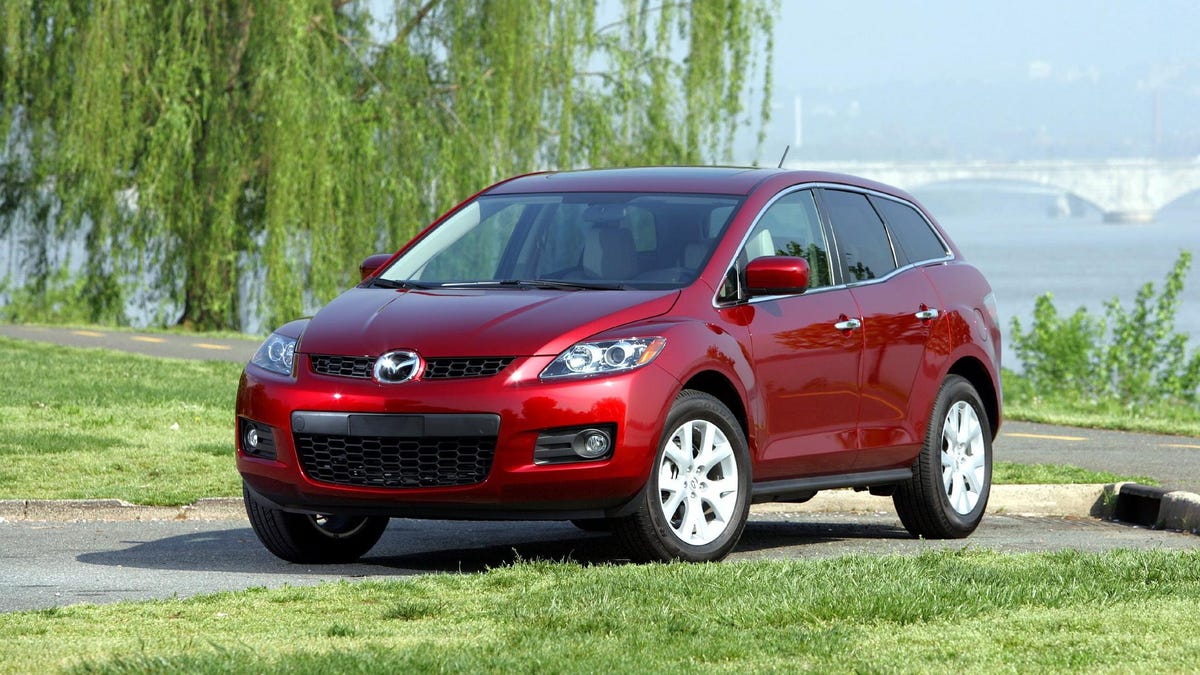Mazda built something different with its first crossover, the CX-7. However in doing so, the brand had to borrow some parts from more than a few random places, making the CX-7 sort of an automotive Frankenstein.
Mazda had a long history of borrowing from Ford for things. It makes sense as the Detroit automaker held a controlling stake in the Japanese automaker for years. The only two SUVs the brand ever sold were essentially rebadged Fords: the Explorer-based Navajo in the early 1990s and thinly disguised Ford Escape Mazda Tribute after that. When crossovers became the new hotness in the 2000s, Mazda wanted in with something of its own.
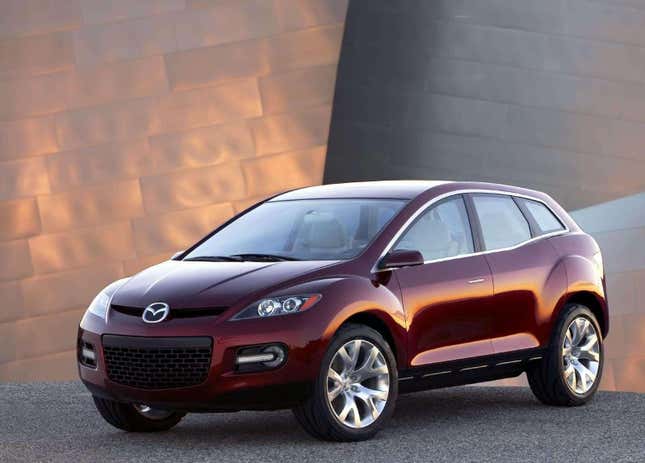
The brand’s engineers got to work and eventually debuted a concept at the 2005 Detroit Auto Show called the MX-Crossport. With an athletic looking design, Mazda described it as combining the sportiness of the RX-8 with the practicality of the Tribute with the brand saying that it “steps into the realm of sports cars where the driver can experience the world of sports cars every time they get behind the wheel.”
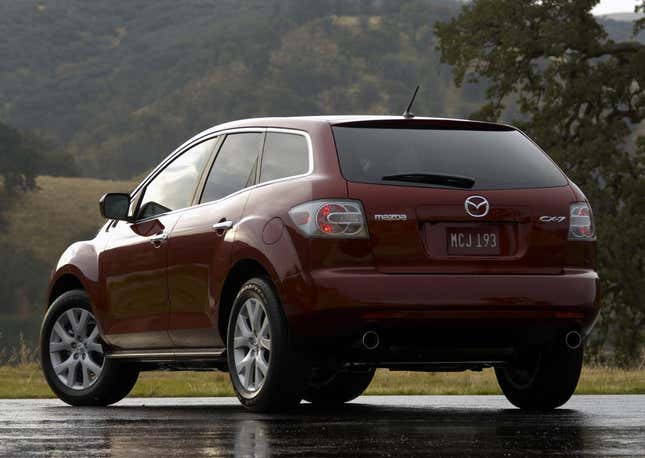
The reality was that the MX-Crossport was a thinly disguised preview of the CX-7, which made its official debut the next year at the L.A. Auto Show. Built at Mazda’s Hiroshima plant, the automaker had to pull parts from all over the place to make it. The heart of the CX-7 was probably its most unique part.
Mazda used the same 2.3-liter turbocharged I4 from the Mazdaspeed 3 and 6. It made 244 horsepower and 258 lb-ft of torque. That was routed to either the front wheels or all wheels through a six-speed automatic transmission. Other markets received either a 2.2-liter diesel or a 2.5-liter I4 with either a five-speed auto or a six-speed manual.
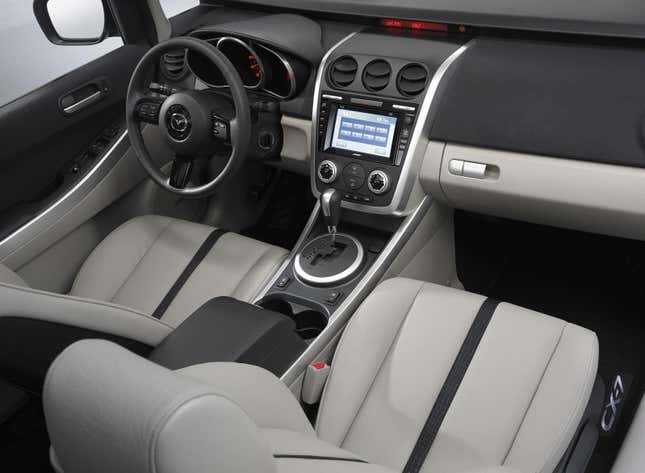
Other parts came from off the shelf. The front suspension came from the MPV minivan while the rear setup and steering column came from the Mazda5 MPV. The steering wheel came from the NC generation of the Miata while the optional all-wheel drive system also came from the Mazdaspeed6. Even the platform it rode on was weird. Mazda used Ford’s C1 platform for the CX-7, which also underpinned vehicles like the first generation Ford C-Max, the second gen Focus we didn’t get and Volvo’s C30 and C70.
Despite that, Mazda got the driving dynamics right, paying off the brand’s “Zoom Zoom” tagline. Testers praised the driving dynamics. Car & Driver described it as “an SUV doing a rally car impression.” Part of those good driving dynamics came from the fact that it had a relatively low curb weight — for what it was — of 3,916 pounds. It was also capable of pulling .80gs on the skidpad.
It wasn’t all good though as some independent testing found a few flaws. The lack of a manual transmission was one. The engine was another. Although it was used in Mazdaspeed models, the performance of the turbocharged engine fell flat in the CX-7. Some described it as thrashy, coarse and gutless. Its zero to 60 mph time wasn’t all that great either at 7.4 seconds. Power for the engine fell off too, way before it’s 6,500 RPM redline. Fuel economy was also strangely poor, something that another engine option could have helped. Car & Driver pointed out in its testing that its overall 19 mpg rating was one worse than a Hemi powered Dodge Magnum R/T (R.I.P) that was recently tested.
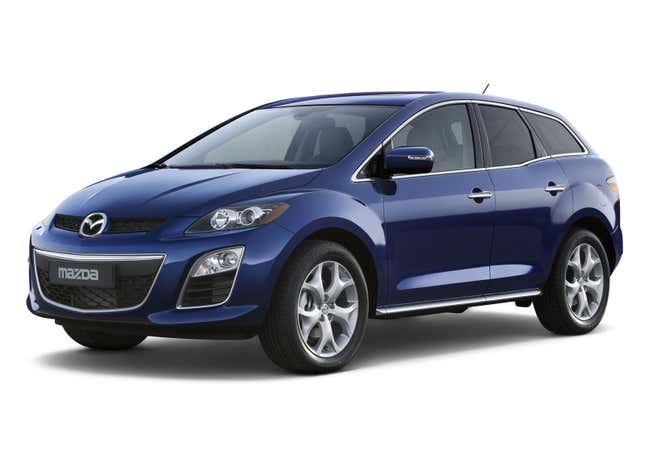
Ultimately, the CX-7 would last in Mazda’s lineup for just five years. A refresh in 2010 added revised front and rear fascias and a bit of tech in bluetooth connectivity and a blind spot monitoring system. It seems though that the years haven’t been kind to the CX-7 either as they seem to have had reliability issues. Online research indicates that the hodgepodge of various off the shelf parts gave people problems, like blown turbos in the engine. While that may tarnish its history a bit, without the CX-7, we may never have gotten nearly every Mazda crossover to exist since then, like the CX-5 (which replaced the CX-7), excellent CX-9 or the current CX-70/90.


